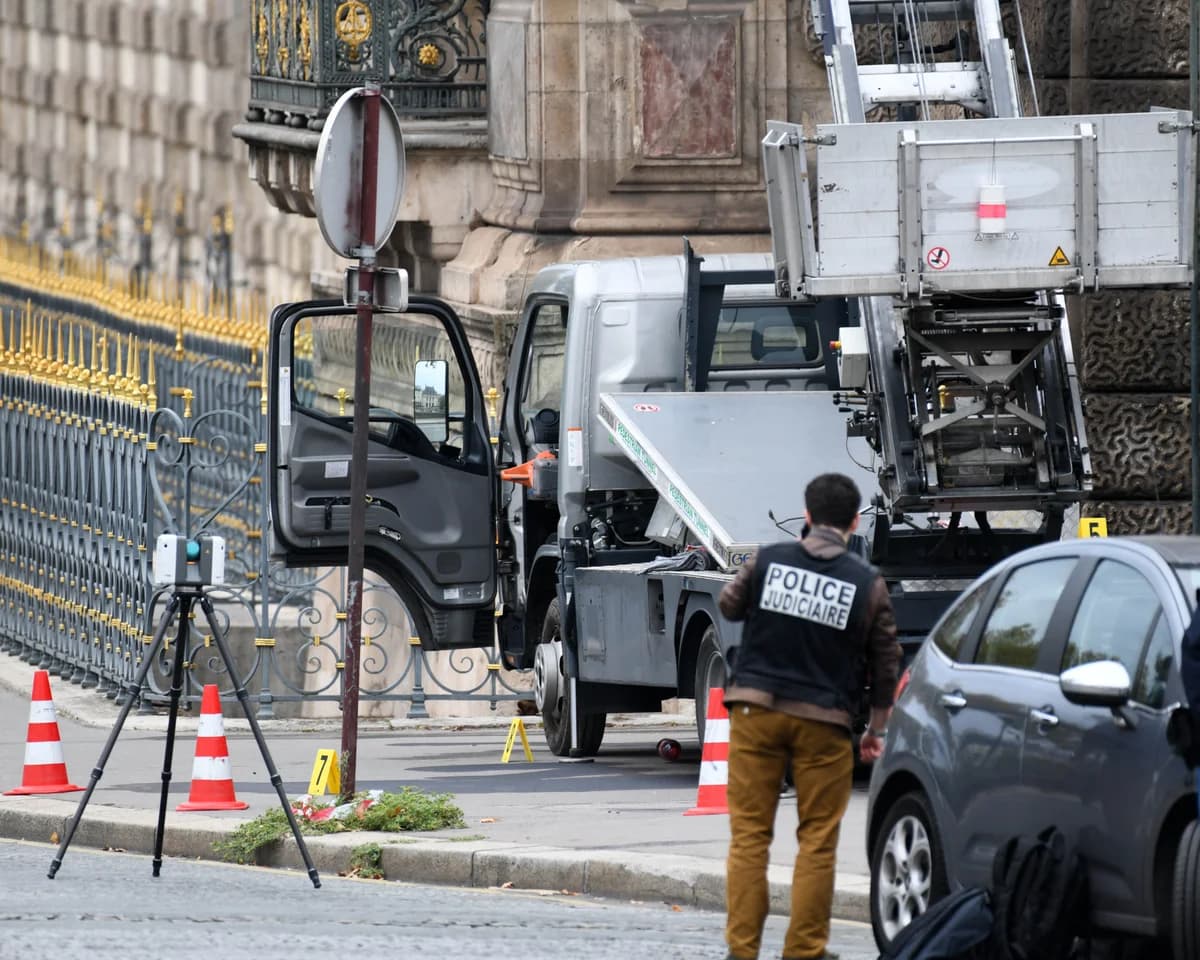We're loading the full news article for you. This includes the article content, images, author information, and related articles.
The brazen daylight robbery of historic French crown jewels from the world's most-visited museum raises global questions about the security of cultural heritage. Investigators are now pinning hopes on forensic evidence left at the scene.

French authorities are meticulously analysing over 150 DNA samples and fingerprints left behind by a gang of thieves who stole an estimated €88 million (approximately KSh 14.5 billion) worth of French crown jewels from the Louvre Museum in Paris. The high-stakes investigation, involving more than 100 officers, is focused on forensic evidence recovered from tools, a helmet, and other gear abandoned at the scene of the audacious daylight heist that took place on Sunday, 19 October 2025.
Paris Prosecutor Laure Beccuau stated on Friday, 24 October 2025, that she holds “a small hope” of recovering the priceless jewels and is optimistic about the investigation's progress. She told the Ouest-France newspaper that results from the forensic analysis are expected in the coming days and may provide significant leads, especially if the perpetrators have prior criminal records.
The robbery, which unfolded in under eight minutes, began at approximately 9:30 AM EAT (9:30 AM CEST), shortly after the museum opened to the public. A team of four individuals, disguised as construction workers in high-visibility vests, used a stolen furniture removal truck equipped with an extendable ladder to access a first-floor balcony of the Apollo Gallery, which houses the royal collection. Two members of the gang ascended in the lift, smashed a window, and used disc cutters to break into two display cases, triggering alarms. After seizing eight priceless items, they descended and fled on motorbikes driven by their accomplices.
In their haste, the thieves dropped one significant piece, the Crown of Empress Eugénie, which was recovered at the scene. They also failed in an attempt to set their vehicle on fire, leaving behind a trove of potential evidence for the BRB organised crime squad and specialists in trafficked artworks. Investigators are also analysing extensive CCTV footage from across Paris to trace the gang's escape route.
The stolen items represent a significant loss of France's cultural heritage. They include an emerald and diamond necklace given by Napoleon I to his second wife, Empress Marie-Louise, and a diadem belonging to Empress Eugénie featuring nearly 2,000 diamonds. While the monetary value is estimated at €88 million, Prosecutor Beccuau emphasised that this figure does not capture the immense historical damage. Experts have expressed fears that the thieves may break down the jewels to sell the individual gems and precious metals on the black market, which would make them virtually untraceable.
The heist has exposed significant security vulnerabilities at the world-renowned institution. The Louvre's director, Laurence des Cars, admitted to French senators on Wednesday, 22 October 2025, that there was a “terrible failure” and acknowledged that security camera coverage of the museum's exterior was “highly insufficient.” Specifically, the camera covering the point of entry was facing the wrong direction. In response, French President Emmanuel Macron has ordered an acceleration of planned security upgrades at the museum. The incident is the most significant theft from the Louvre since the Mona Lisa was stolen in 1911.
While there are no direct links to Kenya or East Africa, the theft has global ramifications for the art and antiquities market. Such high-profile heists highlight the persistent demand for stolen cultural objects and the sophisticated networks involved in their trafficking. INTERPOL has added the stolen jewels to its international Stolen Works of Art database to alert law enforcement and art dealers worldwide. The incident serves as a stark reminder to cultural institutions globally, including those in Kenya, of the critical need for robust and modern security systems to protect irreplaceable heritage from organised criminal syndicates.
Keep the conversation in one place—threads here stay linked to the story and in the forums.
Other hot threads
E-sports and Gaming Community in Kenya
Active 6 months ago
Popular Recreational Activities Across Counties
Active 6 months ago
The Role of Technology in Modern Agriculture (AgriTech)
Active 6 months ago
Investing in Youth Sports Development Programs
Active 6 months ago